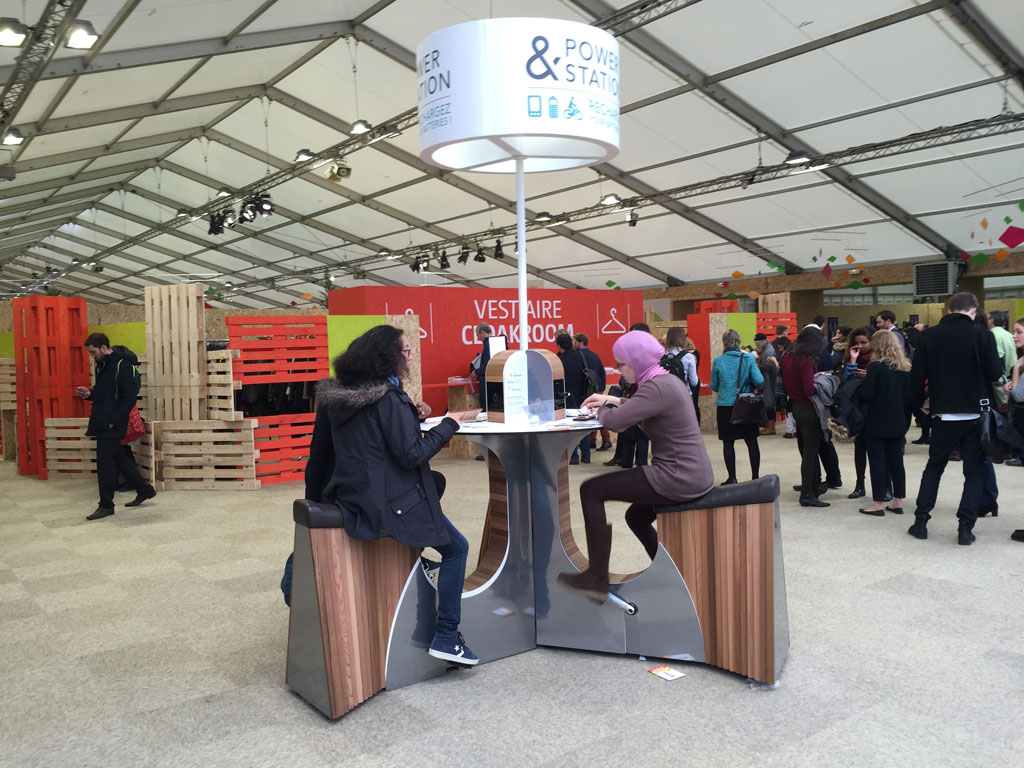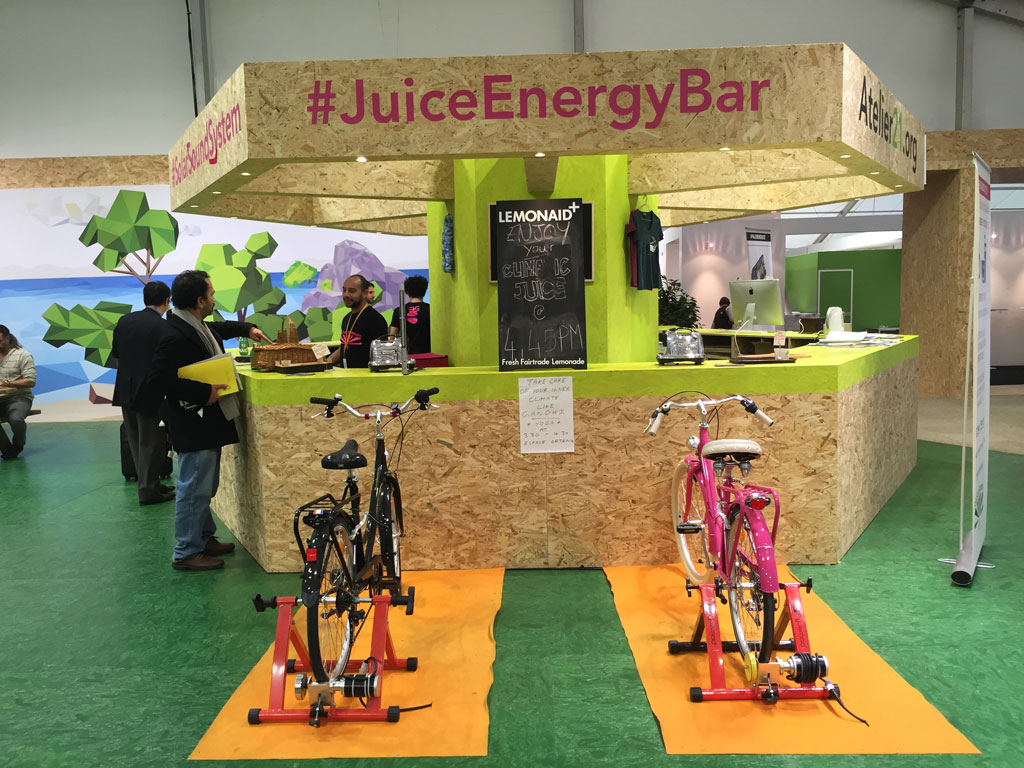COP21: a ‘green’ UN climate change conference, from electric cars to the power of human energy
With countries reaching a new agreement at the United Nations climate change conference (COP21), the global meeting has been qualified as a “monumental triumph” by top UN officials. While many continued to hail the outcome document as the walls of COP21 were torn down on Sunday, the UN News Centre looked back on other aspects that contributed “positive energy” to the two-week event.
Highlighting what made COP21 “green” was Fanina Kodre-Alexander from the UN Environment Programme (UNEP), who manages communications on climate change, disasters and conflicts. She said UNEP worked with the organizers – the UN Framework Convention on Climate Change (UNFCCC) and the Government of France – to ensure sustainability throughout the Paris-Le Bourget site located north-east of the capital.
“We work under our ‘Eat, Think, Save’ campaign in collaboration with the UN Food and Agriculture Organization, and we believe that food waste is the third largest emitter after a couple of countries,” Ms. Koder-Alexander noted.
To reduce waste, all the food provided at UNEP events, including those during COP21, is sourced from rescued food, resources that would otherwise have been destroyed. Ms. Kodre-Alexander highlighted that it’s always provided in a “very appetizing and lovely way.”
Another exciting feature at COP21 related to food, which attracted a lot of attention, was the boulangers brought on premise to avoid trucking kilos of fresh baguettes ever day.
They welcomed the UN News Centre into their lab, which is visible to all conference-goers through a thin see-through plastic tarp.
To go with the bread, of course there’s café.
“We’re very happy to see they’re using recyclable cups,” said Ms. Kodre-Alexander. “The method which they’ve employed is that people are returning them to get a credit. It’s quite successful and you don’t see them left around and dropped in the garbage.”
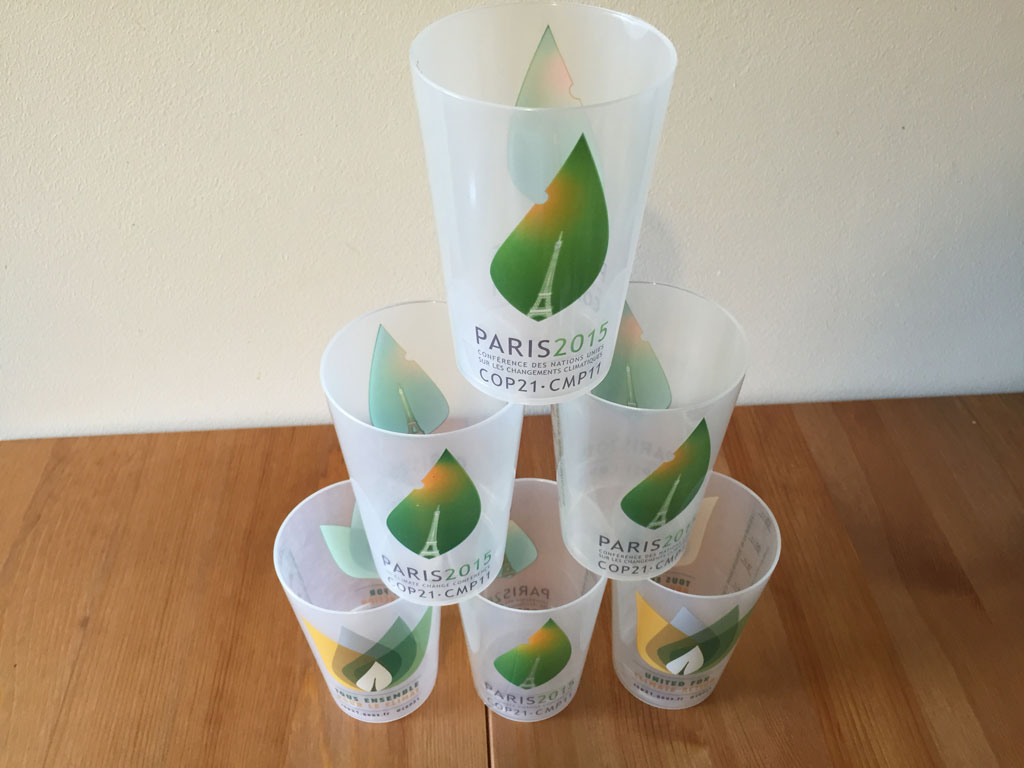
In addition, welcome packs handed out to all participants included water bottles to limit the number of plastic ones purchased. Water stations to fill these were abundantly found around every corner, similarly to the many recycling bins, clearly labeled to support the separation of paper, plastics and compostable organic waste.
“UNEP has also tried to be as paperless as possible,” added Ms. Kodre-Alexander. “There are certain documents that need to be printed and distributed but we believe in either providing links to our website or USB keys when available.”
On Saturday, the printed final draft of the agreement was handed out to delegates to review before they reconvened hours later for its adoption. This was a rare time paper was seen throughout the venue, as negotiators met in all free spaces including the cafeteria.
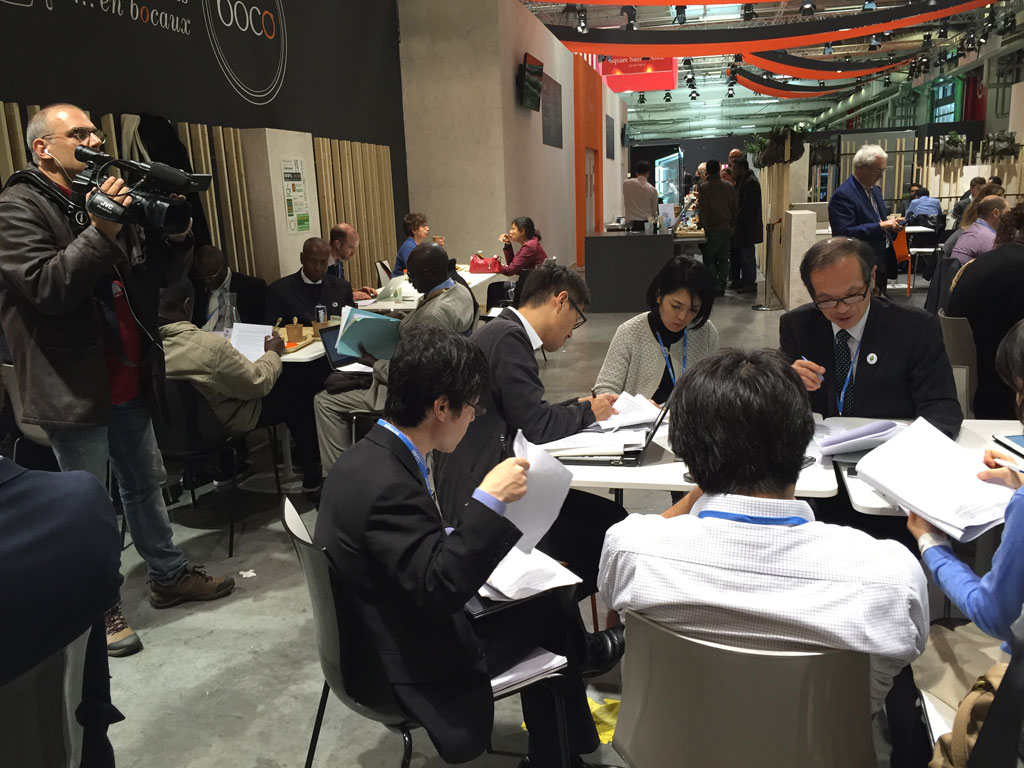
Meanwhile, several eco-friendly options were available to get to and from the site. In addition to free public buses, 300 electric cars were provided by Renault-Nissan to anyone seeking a ride. Reservations could be made online just hours in advance, or in person with a little extra wait time. Two hundred of the drivers were professional chauffeurs, while the rest volunteered to help limit COP21’s carbon footprint. According to Renault-Nissan, a total of 16.32 tons of carbon dioxide were diverted during the two weeks thanks to the initiative.
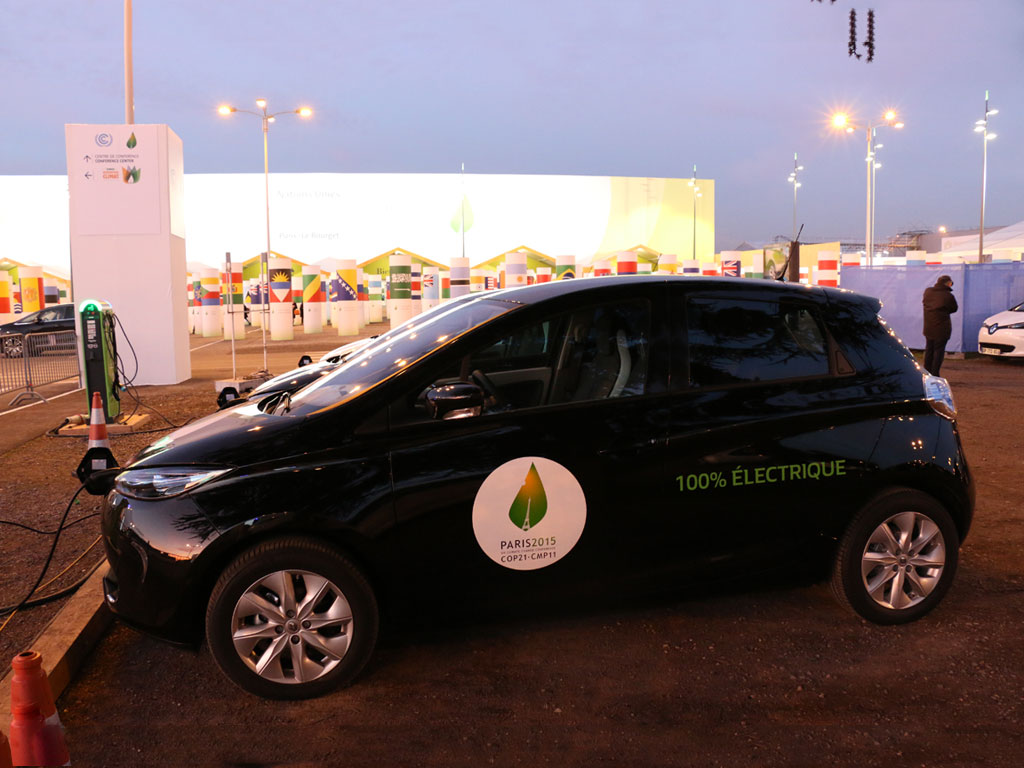
While the cars recharged during the day, so did thousands of cell phones at power stations provided by a group called “Solar Sound Systems.” Unlike a typical plug, participants had to pedal to activate the charging. Similarly, this applied to making one’s own juice and contributing to power a DJ booth located in the Generation Climat hall, a space open to the public and dedicated to the exchange of idea, mainly between younger climate advocates.
Despite all these “green” options, the UN News Centre asked Ms. Kodre-Alexander whether there was anything more she had wished to see at the conference.
“Personally for me it’s always the heating/air conditioning issue,” she answered. “I always find that if you’re overheating the venues and then air conditioning others, you’re consuming a lot of resources that would normally be saved.”
Perhaps this is an additional aspect to consider next year, when a new COP convenes next November in Marrakesh, Morocco.


